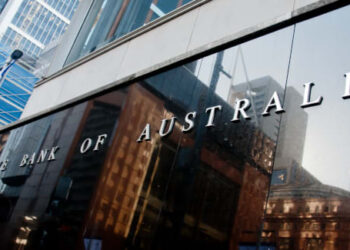The latest RBA Cash Rate Survey by Finder found that out of the 40 experts it asked, 68 per cent, or 27, tipped an easing of the cash rate for July.
Nearly three-quarters of experts (72 per cent or 23) saw the bottom of the cycle at 0.75 per cent or lower while close to a third (32 per cent or 10) anticipate the rate will reach 0.5 per cent.
When asked about further cuts, experts in the survey nominated August and November as strong favourites.
Many have said they are favouring a cut at the next meeting following RBA governor general Philip Lowe’s address to the Committee for Economic Development of Australia last week, where he stated “it is not unrealistic to expect a further reduction”.
Shane Oliver, head of investment strategy and chief economist at AMP Capital, has sided with the rate being slashed in July, adding that more rate cuts will be needed.
“The June 0.25 (percentage point) rate cut has not been enough for the RBA to achieve its objective of lowering employment, boosting wages growth and pushing inflation back to target,” Mr Oliver said.
Likewise, Alex Joiner, chief economist of IFM Investors, commented: “The RBA knows that it is not making inroads to spare capacity in the labour market as it desires and has clearly signalled it believes policy rates to move lower further still.
“There seems little point in waiting for further data given the bank has already reached this conclusion, as August move can’t be ruled out as the board may choose to see a new set of forecasts, but these would have improved so again this suggests the bank should move in July.”
However, others have been cautious to accept the majority consensus, with Morgan Stanley arguing it has been based on “RBA communication rather than data increases”. The investment bank also said the upcoming G20 outcome would be pertinent.
Morgan Stanley’s view is that waiting until August would send a less worrying signal and potentially place more pressure on fiscal policy to act.
“While the RBA has signalled a further rate cut, there was no indication on timing, unlike prior to the June meeting where the governor noted in a speech that ‘at our meeting in two weeks’ time, we will consider the case for lower rates’,” the analysis noted.
“A pause would allow for a more gradual cutting cycle, which has been the RBA’s preference in the past – the last back-to-back rate cut (and also last 50 bps rate cut) was in 2012 on concerns around the international environment (an indication that the G20 outcome this weekend will also be important).”
Nicholas Gruen of Lateral Economics has contended the RBA may be better off consolidating the reductions into one large cut rather than multiple small ones.
“I’ve argued that larger steps than 25 basis points would be apposite, but smaller ones convey a less panicky picture to onlookers,” Mr Gruen said.
On the other hand, Graham Cooke, insights manager at Finder, said lenders should be gearing up to get busy with further rate reductions.
“The RBA will have its scissors out for the foreseeable future to try to stimulate inflation and reduce employment, and lenders should be ready to follow suit,” Mr Cooke said.
“The heat is on for those banks who only passed on a partial rate cut (less than 25 basis points) after the June rate reduction. Doing the right thing by their customers this time around – by passing on a cut in its entirety could see them redeem themselves.”







